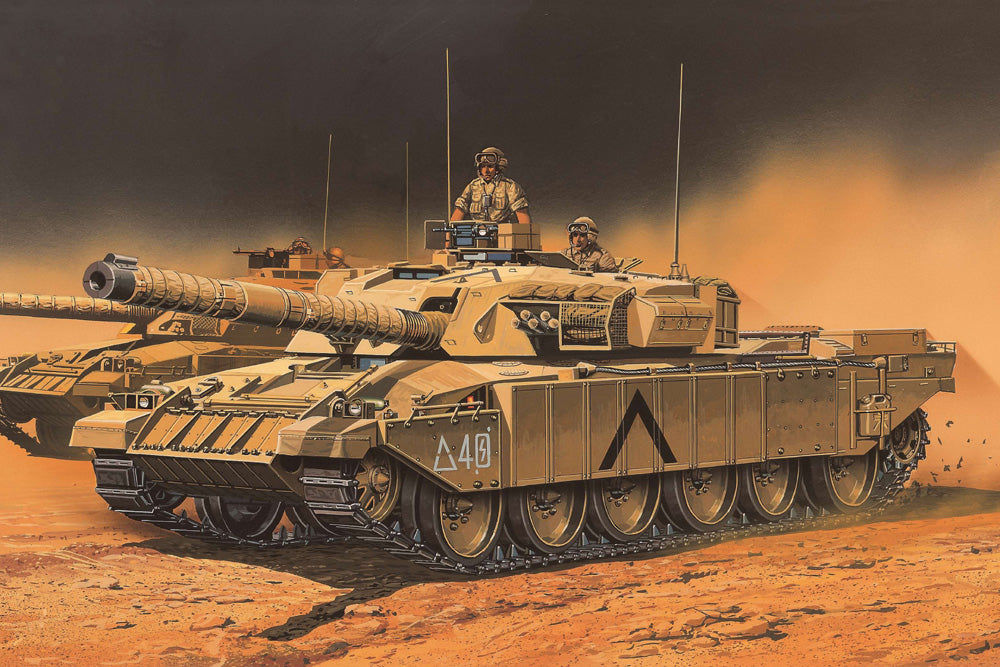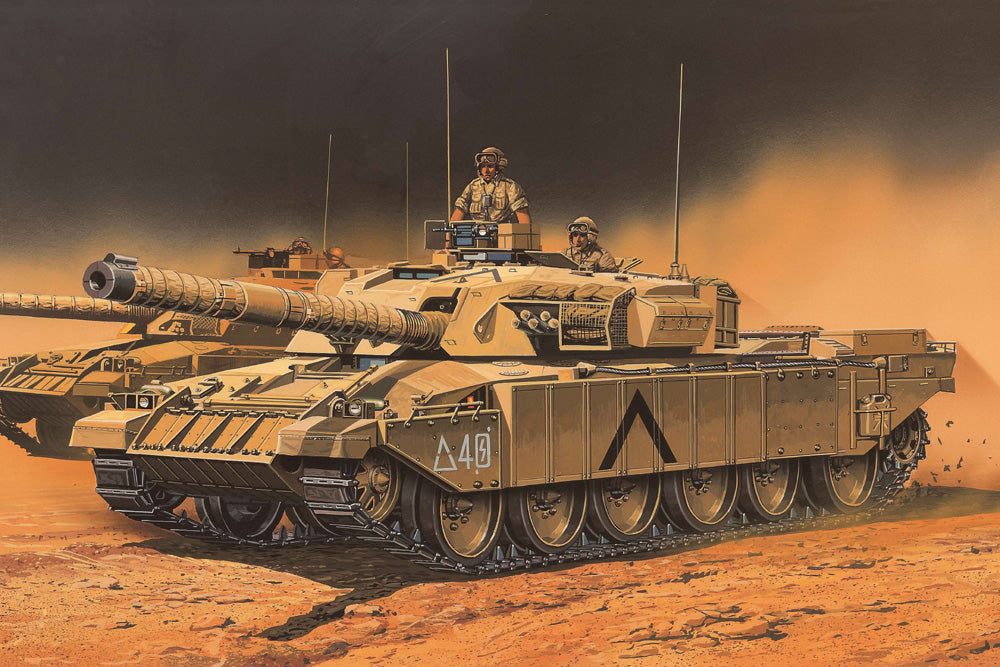ACADEMY 1/72 BRITISH ARMY CHALLENGER MK. 3
ACADEMY 1/72 BRITISH ARMY CHALLENGER MK. 3
No se pudo cargar la disponibilidad de retiro
Challenger 1 Mk 3
British main battle tank (MBT) in service from 1983 to 2001. Armed with a 120mm L11A5 rifled gun (retro-fitted with L30A1), 7.62mm L8A2 & 7.62mm L37A2 machine guns mounted on the turret roof. Equipment included virtually impregnable Chobham composite armour for protection against threats including kinetic energy penetrators and high-explosive anti-tank (HEAT) rounds. Other defensive measures included laser warning system and smoke grenade launchers. Challenger 1 performed very reliably in the Gulf War in 1991 and without loss. Mk 3 has passive armour plates and extra stowage bins for 120mm rounds.
Choice of 3 markings
(1) Riyal Scots Dragoon Guards, Kuwait 1991;
(2) Queen's Royal Irish Hussars, Tank Museum, Bovington;
(3) Queen's Royal Dragoon Guards, Bosnia 1996.
The Challenger 1 was a British Main Battle Tank from the Cold War period. The first prototypes of this vehicle were made in the mid-1970s, and serial production was carried out in 1982-1990. Over 400 vehicles of this type were created in its course. The car was powered by a single 1,200hp Rolls-Royce CV-12 diesel engine. Its armament consisted of a single 120mm L11A5 rifled cannon and two 7.62mm machine guns.
The Challenger 1 was developed as the British Army's new main battle tank to replace the Chieftain line. Its design, however, was based on many elements of the Shir-2, which was to be produced for Iran, but which was based on the Chieftain tank. The new tank, which received the designation Challenger 1 by the British Army, compared to its predecessor, had much better Chobham armor, which protected it very well against e.g. HEAT shells. It also received a new engine with more power, as well as other electronic equipment. However, the car was not free from problems - above all, compared to such tanks as Leopard 2 or M1 Abrams, it had very poor performance and maneuverability. Its main armament was also inferior to 120mm smoothbore guns. Bearing in mind all these shortcomings, the vehicle manufacturer - Vickers Defense Systems - decided to improve it and create the Challenger 2 tank. It is worth adding, however, that despite the shortcomings, the Challenger 1 tanks performed very well during the First Gulf War (1990-1991). Vehicles of this type remained in the line of the British Army until 2001.
Share


